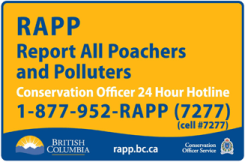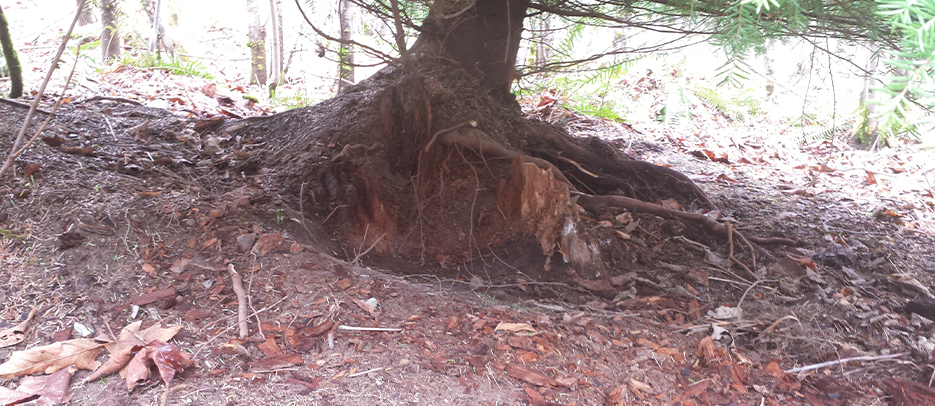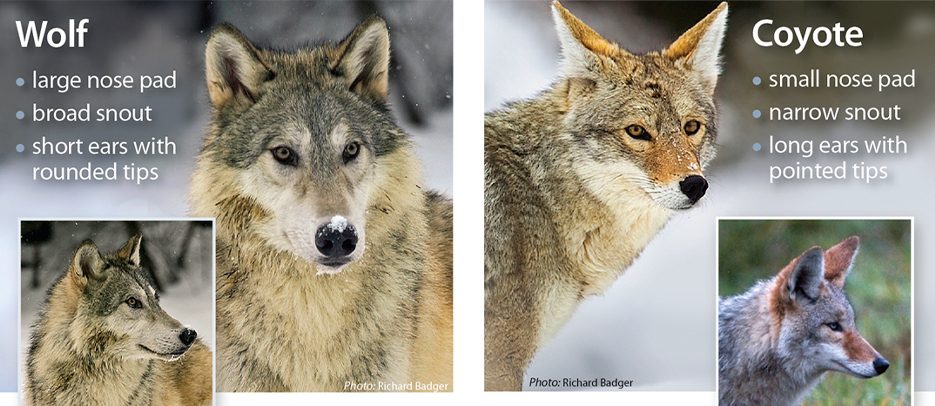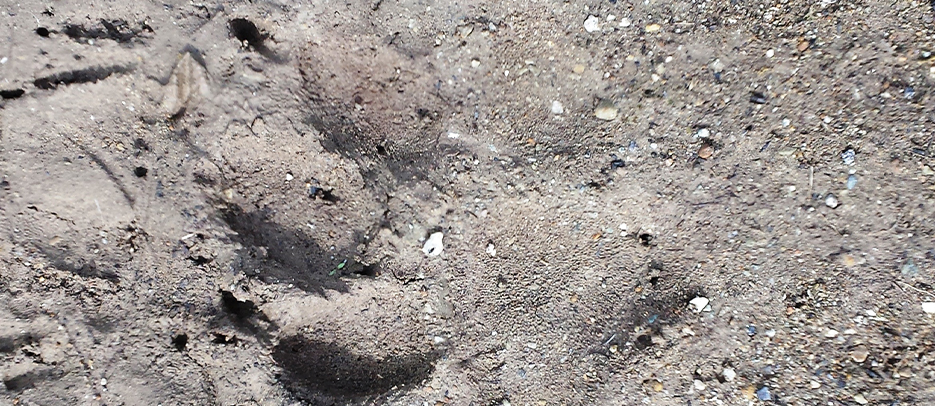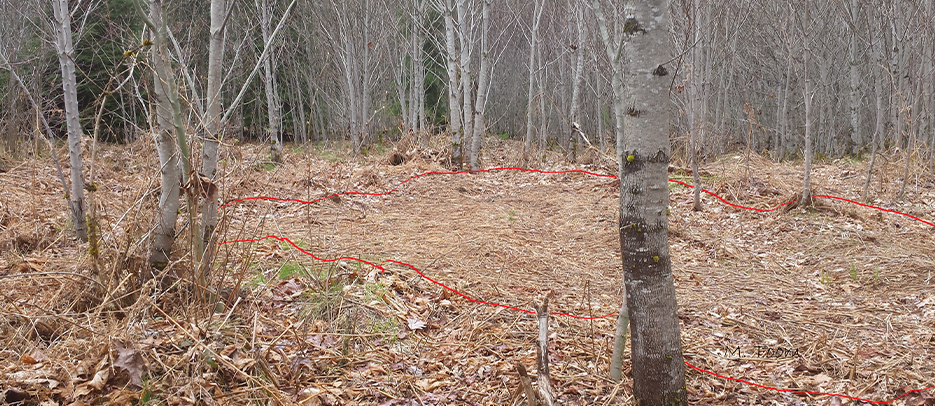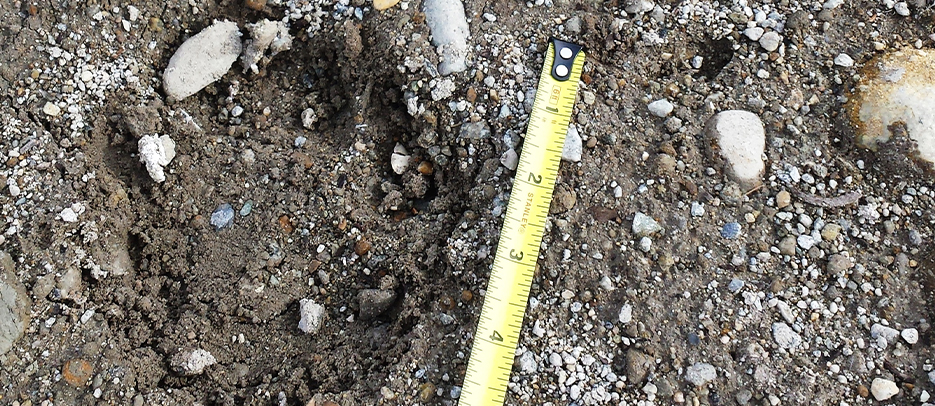Wolf
The Squamish Valley is home to the Western wolf (Canis lupus), otherwise known as the Timber wolf or Grey wolf. Wolves are apex predators-they are top of the food chain and are indicators of a healthy ecosystem. Moose, elk and deer are their main sources of food within the region but they will also hunt smaller animals i.e. beaver, hare, rodents, livestock & pets. Wolves are active twelve months of the year and while they are typically averse to human settlements and activity, sightings within the urban domain do occur now and again. There are steps you can take to ensure you are not attracting wolves onto your property. Click the image to view WildSafeBC's Wolf brochure.
How to recognize a gray wolf
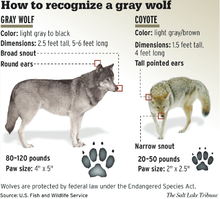
Source: Wikipedia
AT HOME:
- Do not attract or feed wildlife. Deer, raccoons, mice and rabbits are natural prey and may attract wolves.
- Do not leave pet food outside as this can attract wildlife.
- Ensure birdseed is not attracting wildlife.
- Ensure garbage and organics are locked to prevent attracting rodents, raccoons or wolves.
- Roaming pets are easy prey: bring pets in at night. If they must stay outside at night, ensure they are in a kennel with a secure roof (see below for further information on keeping pets safe).
- Ensure livestock pens & coops are surrounded by a well maintained electric fence.
- Cut back brush to reduce cover for wolves to rest and to increase sight lines for better visibility.
- Install motion sensor lights.
CHILDREN and WOLVES
- It is not normal for wolves to attack or pursue humans. Problems between humans and wolves can occur when the wolf has become habituated/comfortable with people as a result of direct or indirect feeding.
- If a wolf is sighted in an urban or rural area recommend to parents that they keep their children inside until the wolf has left the area. The wolf was likely just passing through. Children shouldn't be left unsupervised.
PETS
- Outdoor pets should be supervised and checked on regularly.
- Wolves may kill pets that run loose.
- Pets can be left inside when people aren't home or kept inside an enclosed kennel.
- Pets should be kept leashed and under control at all times. Don't allow the pet to chase/pursue wildlife (it is an offence under the Wildlife Act).
WOLF SIGHTINGS RURAL OR URBAN
- Wolves are generally not a threat to humans. Wolves are secretive; usually once a wolf has spotted or winded a human it will run away without the person even knowing it was there.
- The following advice may be useful
- Bring children and pets inside until the wolf has left the area.
- Do not allow a wolf to approach any closer than 100 metres.
- Raise your arms and wave them in the air to make yourself look larger. Ready your deterrent.
- Back away slowly, do not turn your back on a wolf. Never run.
- Don't allow children to play away from camp. Keep them close to adults at all times.
- It is an offence under section 33.1(1) of the Wildlife Act to feed dangerous wildlife. Report via 1-877-952-7277 anyone that is feeding or intentionally attracting dangerous wildlife.
For more information, please visit the Conservation Officer Service wolves and coyotes page.
